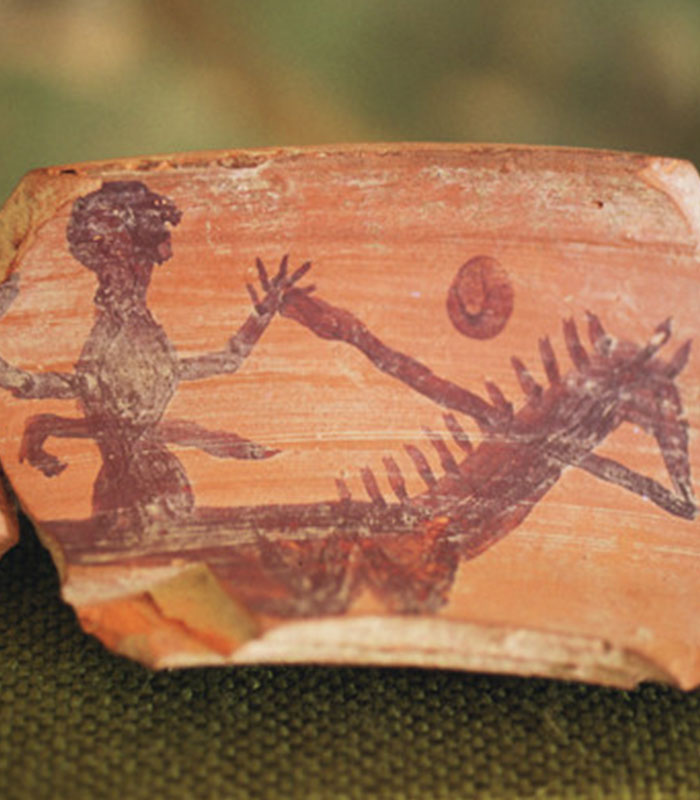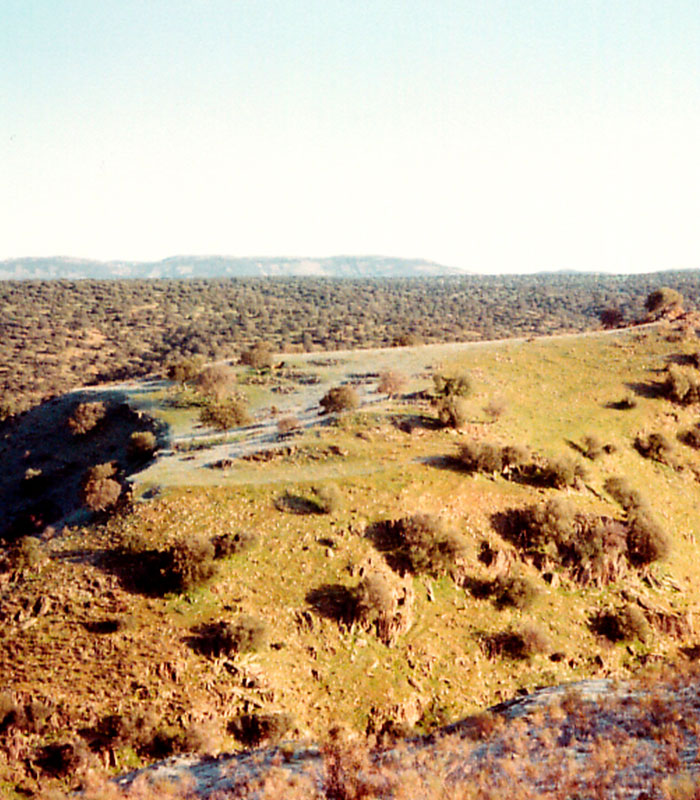The fortified settlements of Aldeacentenera, Berzocana, Retamosa, and Fresnedoso de Ibor are good examples of the native cultures of the Iberian Peninsula. Located in some of the most strategic sites of the Villuercas-Ibores-Jara Global Geopark of the UNESCO, they are small settlements in which these peoples led a way of life based on agriculture, stockbreeding, and trade. This type of settlement endured until shortly after the arrival of Roman culture.
Before the Romans arrived in the Iberian Peninsula, what is now Extremadura was inhabited by various peoples of tribal organisation which maintained contact with others from the Tableland, Portugal, and Sierra Morena and even from further afield. These peoples were divided into those of Celtic origin and those of Iberian origin. Those which inhabited the area of Las Villuercas, Jara, and Ibores were of the first group, to be precise Vettones. Other Celtic peoples established in Extremadura were the Lusitanians in the west of the province of Cáceres and the Celts who occupied the southwest of Badajoz. The Iberians included the Turdetani in the west of the province of Badajoz and the Turduli established in the southeast. The origin of these cultures goes back a thousand years before Christ. Their decline was due to the Roman occupation of the Iberian Peninsula between the 2nd and 1st centuries B.C, although some peoples survived for a time under the new domination. In the area of the Geopark we can contemplate some examples of these Vetton fortified settlements in which the indigenous population lived.
One of these can be found in Aldeacentenera on the estate of La Coraja five kilometres from the village; it dates from approximately the 4th century B.C. The perimeter is walled and a series of dwellings have been discovered inside it. An important element of this site is the ancient midden of the settlement which was located outside the walls.

